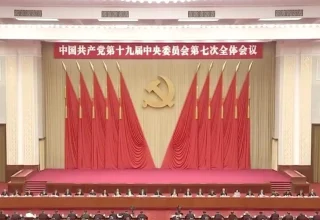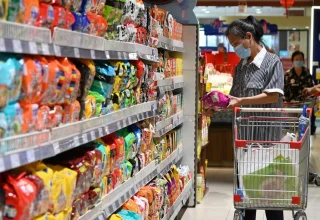BEIJING, July 2 (ABC): The Communist Party of China (CPC), embracing its 101st birthday on Friday, is steering the Chinese economy back on track despite headwinds at home and abroad.
To minimize the impacts of domestic COVID-19 resurgences and global complexity on the economy, the world’s largest governing party has given instructions ranging from bolstering employment and unclogging logistics to propping up small businesses and increasing economic openness.
Following the Party’s leadership, governments at all levels have made all-out efforts to help the economy navigate the temporary hardships.
EMPLOYMENT FIRST
Job creation has always been a priority on the CPC’s policy agenda. Back in 2020, a year of so many uncertainties for the country that it set no numerical economic growth target, it dedicated itself to a clear goal of creating over 9 million urban jobs.
This year, facing COVID-19 disruptions, China is expected to see a record 10.76 million new university and college graduates, a year-on-year increase of 1.67 million.
Adhering to an “employment-first” strategy, the CPC leadership stressed efforts to stabilize and expand employment at a meeting of the Political Bureau of the CPC Central Committee in April.
Government departments have taken firm actions accordingly. Maximizing China’s institutional advantages, the State-owned Assets Supervision and Administration Commission urged all centrally administered state-owned enterprises to expand their current recruitment and talent pool to create more job opportunities.
KEEPING LOGISTICS SMOOTH
To handle the COVID-19 impact on market supply and commodity prices, the CPC leadership has reiterated the importance of unclogging logistics and supply chain so that the economy operates smoothly and people’s essential needs are met.
The country must consider a full picture of national development to ensure unimpeded transportation and logistics by normalizing key industrial and supply chains and suppliers for COVID response and critical infrastructure, according to the meeting in April.
Governments at all levels have acted upon the instructions with targeted moves. A unified national pass for vehicles transporting vital supplies has been adopted by various provinces nationwide, while cities including Beijing have established a “white list” mechanism to secure the delivery capacity of fresh produce suppliers and support the work resumption of key companies.
China’s logistics sector is rebounding from the COVID-19 lows thanks to such efforts. The logistics performance index came in at 49.3 percent in May, up 5.5 percentage points from April, according to the China Federation of Logistics and Purchasing.
SHORING UP BUSINESSES
A series of burden-easing measures have been unveiled by varying government organs in response to the CPC’s call for helping market entities, especially small and micro firms that underpin the country’s economic resilience.
Since April 1, China has launched value-added tax credit refunds on a large scale amid continuous efforts in tax and fee cuts.
To further this policy, the country announced that firms in seven more sectors, including wholesale and retail sales, agriculture, accommodation and catering, will enjoy such refunds from July 1. This move will bring the total amount of tax refunds and reductions to 2.64 trillion yuan (395 billion U.S. dollars) this year.
Other efforts to this end include doubling the scale of the support facility for inclusive loans to micro and small businesses and deferring social security contribution payments for companies facing difficulties.
OPENING DOORS WIDER
Short-term uncertainties have not held back China’s long-standing dedication to sharing opportunities with other nations. At the April meeting, continued efforts are mandated by the CPC leadership to expand high-level opening-up.
On top of introducing two shortened negative lists for foreign investment that came into force on Jan. 1, China has advanced the construction of 21 pilot free trade zones and signed Belt and Road cooperation documents with 149 countries and 32 international organizations.
Eyeing China’s opening-up dividends, foreign investors are scrambling for a larger presence in the thriving Chinese market. In the first five months, foreign direct investment into the Chinese mainland, in actual use, expanded 17.3 percent year on year.
According to recent reports by the German Chamber of Commerce in China and the American Chamber of Commerce in China, 71 percent of German-invested companies and over 60 percent of U.S. companies plan to increase investment in China.


























